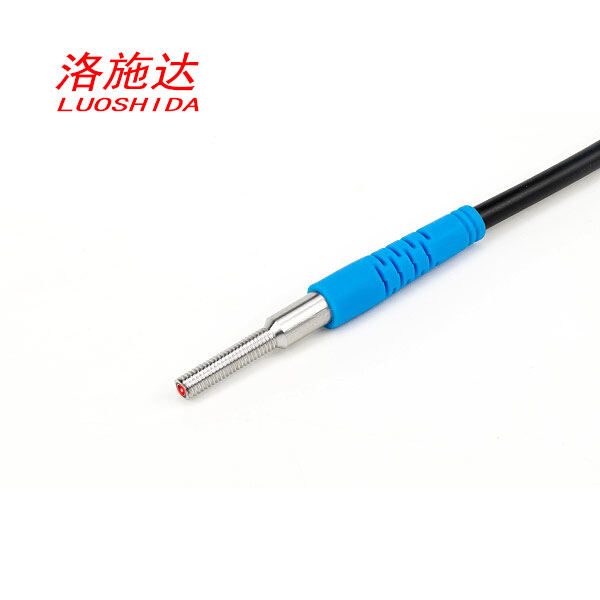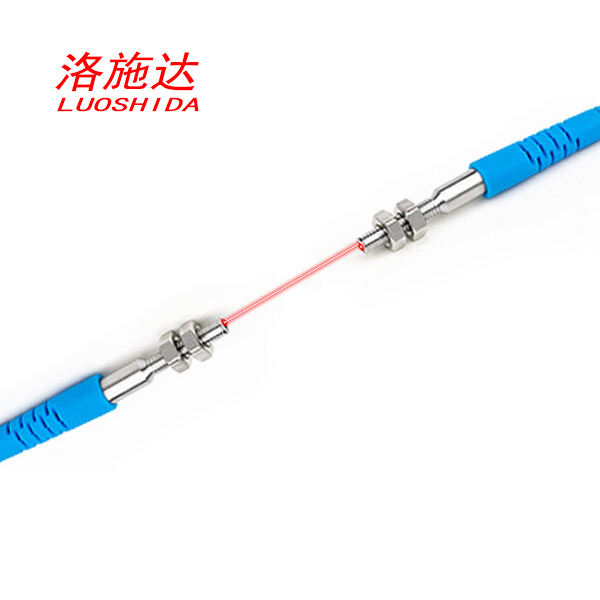Automate your manufacturing processes easily with laser sensors for high - speed object detection.
What Are Laser Sensors for Manufacturing Automation?
Laser sensors for manufacturing automation are advanced devices designed to detect, measure, and monitor objects with high precision. They leverage cutting-edge laser technology to deliver accurate and reliable data, which is pivotal for optimizing production processes in manufacturing settings. These sensors are crucial in industries like automotive, electronics, and pharmaceuticals due to their unparalleled efficiency and versatility. With their ability to enhance quality control and process optimization, laser sensors are integral to modern manufacturing automation.
Applications of Laser Sensors in Manufacturing Automation
Real-Time Quality Control
Laser sensors are vital in ensuring product quality by enabling the detection of defects or inconsistencies in real-time. They are commonly used in tasks such as surface inspection, thickness measurement, and dimensional accuracy checks. For instance, in the automotive industry, laser sensors are employed to verify the precision of machined parts, ensuring that each component meets strict quality standards. This application of laser distance sensors and photoelectric sensors contributes significantly to minimizing production errors and waste, thereby optimizing manufacturing processes.
Precision Positioning and Measurement
Laser sensors provide unparalleled accuracy in positioning and measurement, which is crucial for tasks like robotic arm alignment. These sensors are utilized in assembly line automation and material handling systems, where precise measurements are essential. Their ability to measure distances with micron-level precision, such as infrared laser distance sensors, makes them indispensable in modern manufacturing environments. This high level of accuracy ensures that manufacturing systems operate with optimal efficiency and minimal error, thus playing a critical role in the manufacturing automation landscape.
Automated Inspection Systems
Incorporating laser sensors into automated inspection systems ensures compliance with industry standards by detecting defects, verifying dimensions, and identifying surface imperfections. For example, in the electronics industry, laser sensors are used to inspect PCB components for defects during production. The implementation of photoelectric switch sensors and other laser sensor technologies in these systems helps ensure that manufacturing outputs meet the highest standards of quality. This integration not only enhances reliability but also streamlines the inspection process, reducing the need for manual checks and accelerating the overall production cycle.
DC M3 Ultra-Mini Laser Sensors for Automation
DC M3 Ultra-Mini Laser Sensor Diffuse Mode
The DC M3 Ultra-Mini Laser Sensor in diffuse mode is an advanced solution for automation applications that require both a compact size and superior performance. This sensor is exceptionally adept at detecting objects with different surface properties, like color or texture, making it ideal for the packaging and material handling industries. It excels in tasks involving object detection and counting due to its ability to interpret variations in light that bounce off surfaces. As a photoelectric sensor, its capabilities empower industries to maintain high levels of efficiency and precision.

DC M3 Ultra-Mini Laser Sensor Through Beam Mode
In automation settings that require precise positioning and alignment of objects—where high accuracy and long-range detection are paramount—the DC M3 Ultra-Mini Laser Sensor in through-beam mode stands out. This laser distance sensor is tailored for applications in automotive and electronics manufacturing where object positioning and part verification are routine tasks. Its enhanced capabilities in these critical areas make it indispensable in sectors where accurate and efficient productivity is highly valued.

By leveraging these DC M3 Ultra-Mini Laser Sensors, manufacturers can enhance automation capabilities, thereby optimizing their production processes for increased efficiency and reduced operational costs.
Choosing the Right Laser Sensor for Your Automation Needs
Factors to Consider When Selecting a Laser Sensor
Selecting a laser sensor for automation requires careful evaluation of key factors to ensure optimal performance in your specific application. First, consider the sensor's detection range, accuracy, and response time to meet your requirements. A sensor like the laser sensor offers robust capabilities in these areas. Environmental conditions such as temperature, humidity, and exposure to dust or vibrations are also crucial, as they affect the sensor's performance and longevity. Lastly, evaluating compatibility with your existing automation systems, including any photoelectric switch sensor, is vital for smooth integration and operation.
Integration with Existing Systems
Successful integration of a laser sensor into existing systems enhances efficiency and reduces downtime. It is essential that the sensor can communicate effectively with PLCs, robots, or other control systems. For example, checking compatibility with industry-standard protocols such as Modbus, Ethernet/IP, or Profinet ensures seamless communication. Ensuring compatibility with these protocols will help in harnessing the full benefits of technology like the laser distance sensor and the infrared laser distance sensor, thereby enhancing the overall efficiency of automation setups.
Future Trends in Laser Sensor Technology for Manufacturing
AI and Machine Learning Integration
The integration of AI and machine learning with laser sensors is profoundly transforming manufacturing automation. These advanced technologies facilitate predictive maintenance, defect analysis, and process optimization, enabling new levels of efficiency and precision in industrial applications. For instance, AI-powered laser sensors can foresee equipment failures before they happen, significantly reducing downtime. By predicting malfunctions, businesses can schedule maintenance proactively, therefore minimizing disruptions and maximizing operational continuity. This advancement is a game-changer for industries relying on high throughput and constant machinery uptime.
Enhanced Connectivity with IoT
Enhanced connectivity with IoT is another emerging trend in laser sensor technology, allowing for real-time data sharing and remote monitoring. This connectivity empowers manufacturers to track production metrics, streamline workflows, and make informed decisions based on accurate and timely data. For example, IoT-enabled laser sensors can offer insights into machine performance across multiple sites, thereby improving machine reliability and operational efficiency. Such integration means that manufacturers can adjust production processes dynamically to meet demand fluctuations and optimize resource allocation, leading to a smarter, more connected factory environment.

 EN
EN
 AR
AR
 FR
FR
 DE
DE
 IT
IT
 JA
JA
 KO
KO
 PT
PT
 RU
RU
 ES
ES
